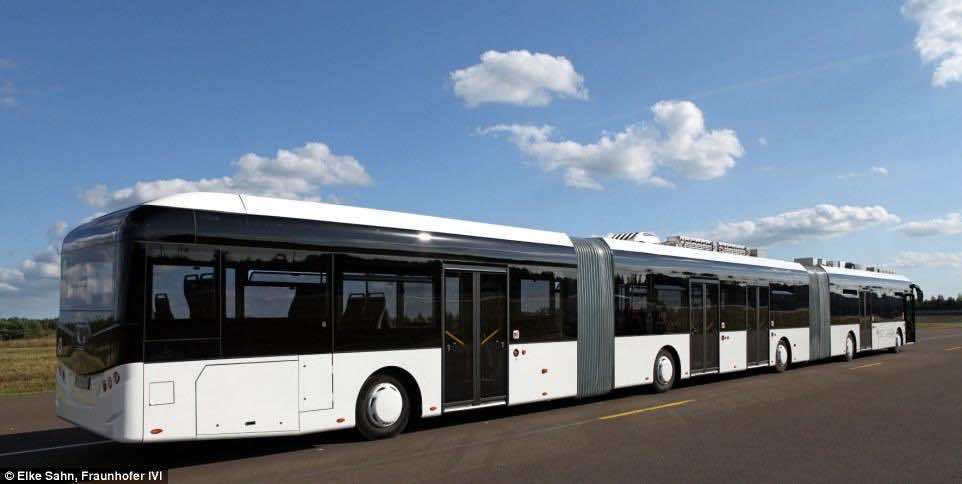Take any tech bro take on transit, and if you try to perfect it, you’ll almost always end up with a train.
What about those giant quadcopter type things they keep wanting to build to fly from building rooftops in cities for some reason?
Within cities?
Look, aircraft are Hella noisy and if stuff goes bad, they’ll smash into buildings. Using them for intra-urban transit is not safe. Besides, I don’t know if multicopters can autorotate, which only adds to the safety concerns.
So why not bring it slightly closer to the ground. Maybe put the transportation device on a bridge or viaduct. And while you could put some stairs up from the streets, you may even choose to link buildings into them directly. Most tall buildings have lifts, after all.
Next, giving each building its own link into the system would be excessive. You can achieve 90 percent of the utility if you have larger entry hubs for multiple buildings, and expect people to walk the last mile.
Anyway, back to the vehicle, since a vehicle for a handful of people is rather inefficient, why not build the vehicles for many dozens of people? Why not build it to connect multiple vehicles? If you run, like, four of these, every five minutes, most people will be able to walk up any time and just go.
And to make that movement more efficient, let’s have our vehicles roll along a specifically designed path, optimised for minimal friction by using hard wheels on a hard surface.
There, I replaced the quadcopters with a train.
If they really want rooftop travel, a gondola system could probably work.
next up in the agenda: what if we make cars larger so more people can travel in them simultaneously
It’s not a hard problem to solve. It’s not hard to see the reasoning behind a desire for self driving cars. Anyone who lives outside of a big city in the US knows this.
Roads are already present. Traffic control is already present.
Tie the goddamn roads to the goddamn traffic control and have it coordinate the cars. The cars input their destination, and have radar to stop the car to prevent accidental collision.
The problem is people don’t like that they can’t get to their destination faster, they don’t have the freedom of choosing their exact route, and they can’t just rev their engine whenever they want.
It’s not mass transit, but it solves the final distance problem.
How many times will techbros reinvent the train/tram until North America finally starts laying down rails?
The US has so much tarmac they don’t even need rails just turn some of that tarmac into dedicated bus lanes. And put one of these long boys on them

Bus lanes are too easy for the next politician to remove bus priority and allow cars back into the lane. At least with rails it’s a lot more costly to remove the route. Busses also still contribute to microplastics and tire waste compared to railed trams. Trams are also easier to automate which can make employing drivers and adding trams to lines less difficult compared to buses. The rails are also more effecient as there is less friction.
I’d defintely take BRT over no transit but many cities are dense enough to justify electrified trams.
I love this Adam Something classic where they keep optimizing the tech bro idea until it turns into Thomas the Engine
Don’t even need to lay down rails. The rails are already there. Built by Chinese slave labor 150 years ago. We need merely to seize them.
Or just cut a check to the freight companies.
Many cities paved over their tram lines. Sometimes they poke through during road work. We had trams in nearly every city 100 years ago yet today people tell me we can’t afford it or our population is too small to support it. If we could do it 100 years ago we could certainly do it now.
Even the rural college town my grandma grew up in had tram lines running down the main streets in the 30’s and to both colleges. If a city had more than 20,000 residents 100 years ago, they probably had a tram system that was pulled up at GM’s behest.
I’d be very concerned about the state and safety of those rails.
Amtrak currently runs trains on the freight tracks, but as Amtrak essentially leases the privilege of using the tracks at all from CSX and BNSF and Union Pacific and the like, their traffic gets heavily deprioritized to freight trains. You can totally catch a train from Fort Worth to Los Angeles, but it will take a few days longer than driving, will be almost as expensive as flying, and the train will be delayed many times for freight traffic.
If the federal government nationalized the rails, put them under the care of the FRA, properly funded Amtrak, and gave it a healthy advertising budget to let people know rail is the clear choice for medium length trips (like Chicago to St. Louis), there’s no reason we couldn’t send passengers on the same rails and with the same priority as freight trains. They’re perfectly safe, and the reason we’ve been hearing about so many train wrecks lately is the degradation of work conditions for rail workers. Longer trains and longer hours make for more dangerous operating conditions and more frequent wrecks.
And while the trains wouldn’t run 190 miles an hour, many long, straight stretches do exist, and it’s not unheard of for a train to be running 80-100 miles an hour on those stretches. That kind of speed is very doable for passenger rail. Hell, some Amtrak trains are capable of 150 miles an hour.
My point wasn’t to use 150 year old rails. It’s that the rails already exist so it doesn’t need to be a decades-long multi-trillion dollar project. It’s highly unlikely that any of the rails in use today are from the 19th century.
On account of the election, you can basically be sure that passenger rail will not happen to any extent any time soon. Expect bigger cars and more highways instead, as this is what is outlined in Project 2025.
Incredibly bleak.
Going backwards while the rest of the world builds more functional and fair cities. We feel just as bad up here in Canada where our provincial premier is overstepping cities to force them to remove bike lanes that just got installed. The lanes are along a subway corridor and there are several apartment buildings planned on those roads that have extensive bicycle parking plans with much less car parking. And we’ve got big plans for new highways while we refuse to build rail along the densest part of our nation.
Can’t we just do like, lines on the road that have specific meanings? We could put it all in a book of rules and standards? Make it a nation wide system?
For an international system, the EU has taken some measures to try and make the road markings and such easier for self-driving cars to recognize and whatnot.
At the request of the European Council, the European Commission has introduced that road markings and traffic signs shall be designed and maintained in such a way that they can be properly recognized both by human drivers and by autonomous vehicles.
Building railway tracks to achieve universal coverage for the entire US without be a massive undertaking that would require a huge effort over multiple decades. Compared to that, building self driving cars is downright trivial. Let’s not forget that they exist already, albeit in limited areas. People should not let their (justified) anger at Musk blind them to reality.
Building roadways to achieve the current coverage for the entire US was a massive undertaking that required a huge effort over multiple decades. Compared to that, building railways is downright trivial. Let’s not forget that self driving trains already exist, but self driving cars don’t. People should not let their status quo bias blind them to reality.
Yeah, but the roadways are here now. And this discussion is moot anyway. Trains aren’t happening. Self driving cars are maybe happening.
You wouldn’t need to maintain as many roads if you converted some percentage to rail (which is much cheaper to maintain) so it could be an investment
Musk’s crap can’t even operate autonomously. Waymo and Zoox are on the lead now.
That was my point.
If tomorrow we banned non-self-driving (NSD) cars, sure. But in most countries, grandfathering in old cars is going to happen for a while. Which means that self-driving and non-self-driving cars will have to share the road.
I could see some transitions possibly. For example, on a 4-lane highway: “In 2027, lane 1 will be separated by a barrier and only allow SD cars. Lanes 2-4 will be for NSD cars only. In 2029, lanes 1-2 for SD. By 2033, NSD cars will be banned on this highway.”
Didn’t Elmo muskrats tunnel end up causing more traffic?
So bike lanes but for cars. What could go wrong.
Trains don’t self-drive, though.
Edit: Okay, for the pedants: most trains don’t self-drive.
But do you know how easy it is to have self driving train compared to self driving car? Because trains only need speed control. Honestly trains are already almost self driving and only needs human inputs occasionally.
You’d think so. But at least Germany struggles massively with missing personnel to staff trains (which includes roles beyond the driver). As far as I know there is no automated solution on the horizon for any form or scale of train traffic. The only self driving trains I have experienced require tight control of the rail environment (entirely underground or lifted above the surface) and special stations with airlocks.
Maybe there is just more money in self-driving cars. But I’m pretty sure they will happen before wide spread automated trains. Which sucks.
Yeah I think it’s the money issue. The companies have more money making self driving cars. Specially since the incremental advancements make them more money on every new car sell.
While trains don’t have incremental advancements with sells associated with them. They have less training and incentives. But technology wise it is definitely easier to control speed 1D, while mostly looking at the front (maybe back) compared to the degree of control/sensors cars need.
Someone has never been to most airports. Or Disney World.
That’s not most trains. Those are highly specialized and constrained applications. There are already self-driving taxis in certain defined city areas, so they’re still ahead by that standard.
I was in Barcelona last month and the metro was automated. Some trams in Switzerland too when I was there two months ago
I’m not a city person but I assumed that was just normal now.
Dunno if you’re from NA but if so just remember you might be a decade behind on public transport
Most trains aren’t public transit, either. They’re freight haulers.
DLR trains do, and several airport trains.
Some London Underground lines have drivers that only intervene in the automatic operation of the train in an emergency or abnormal condition.







